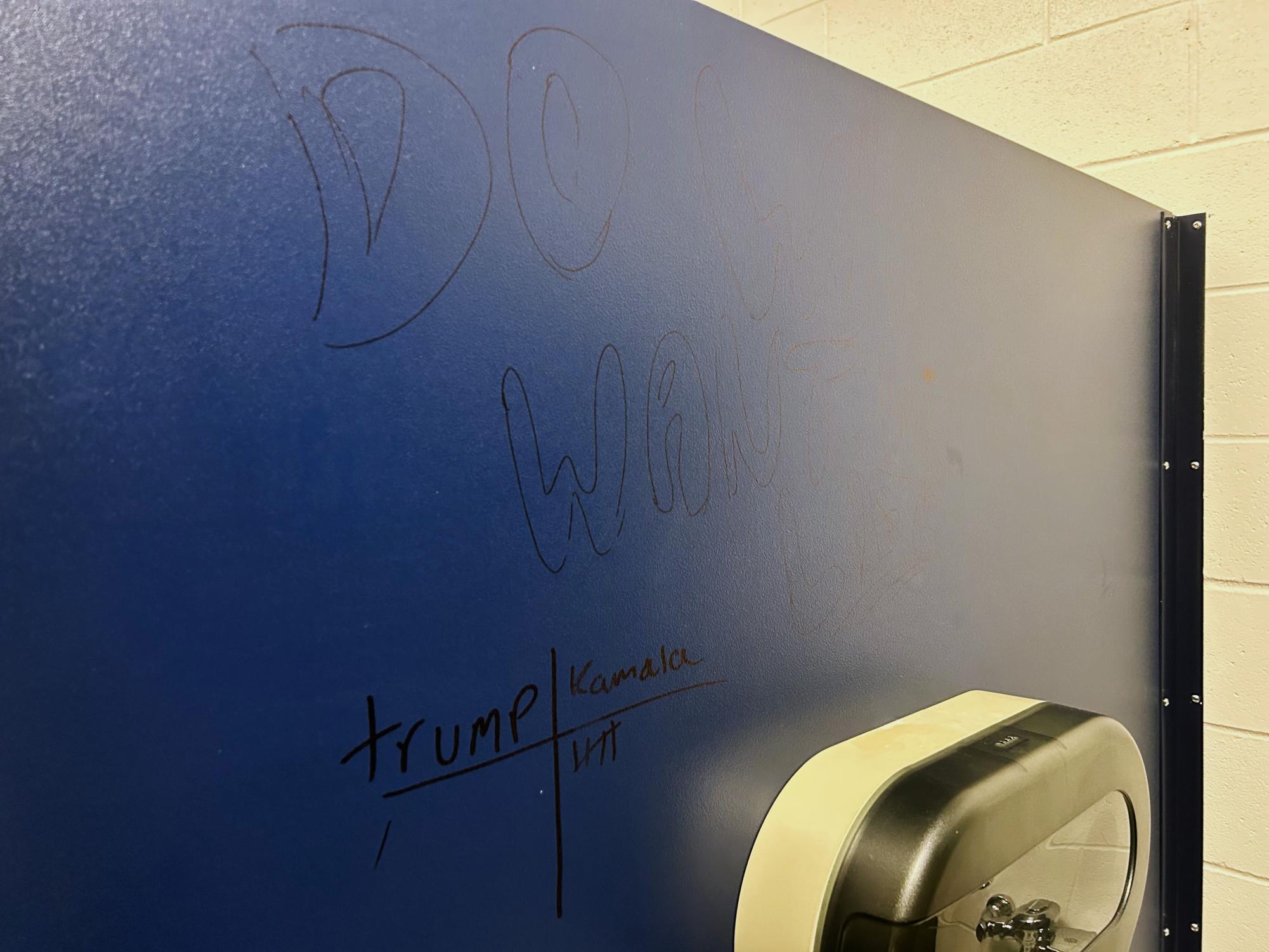In 2021, the infamous “Devious Lick” challenge, which was popularized on Tik Tok, riled up and encouraged members of the student body to damage school property, specifically in school restrooms. Although the magnitude of damage done by vandalism in bathrooms has decreased since then, it continues to run rampant on campus. From political messages drawn on bathroom stall walls, to stealing or destroying soap dispensers , the issue persists.
The presence of vandalism in restrooms goes beyond trivial misdemeanors or student self-expression, and it must be stopped as it can seriously overburden our staff and impact actions taken by administrators, potentially hindering student experiences.
Often, the main victims of the property damage done in restrooms end up being the janitorial staff. As of today, only a total of 12 custodians attend to the janitorial needs of the school campus — this includes the cleaning and upkeep of the 12 total bathrooms. Generally short-staffed as is, it is inconsiderate to add to the workload of custodians by additionally tasking them with the erasing of sharpied messages on bathroom walls. Ever been in a restroom out of toilet paper or soap? If you answered yes, it is likely that the impact of vandalism on staff workloads has had a domino effect and affected you as well.
Vandalism on campus can also prompt school administrators to take preventative actions that are unpopular among students. The most recent example of a preventative measure to stop vandalism is the implementation of the E-Pass system. While this system had many purposes, some of the goals of this system include dissuading students from misconduct, stopping lingering in bathrooms, and vandalism. The system’s low popularity is a prime example of stricter systems responding to rising vandalism. If students want more flexibility, then the spread of such misconduct needs to stop.
If the issue of vandalism persists at our school, it is likely that increasing resources will be allocated to stop this issue, potentially hindering student experiences. Like in 2021, restroom access might become limited again. Additionally, the financial cost of repairing destroyed property represents money that could be employed elsewhere, including programs in danger of being cancelled or facing reduced funding. This is of special importance considering the district’s budget cut of approximately $12.8 million (5.8%) at the campus level.
Graffiti is a controversial topic, with some considering it vandalism and others an art form. Regardless of your stance, it is important to be respectful of common spaces and the impact it can have on individuals. The school will inevitably fight back against property damage and delegate financial resources and tasks to overworked staff members. If a student wishes to express an opinion or explore a creative outlet, they can be mindful of others and, rather than doing so on bathroom stalls, they can express opinions on social media or explore graffiti-style art through other mediums.
Ultimately, the destruction of property in bathrooms must stop in order to lighten the janitorial staff’s work and give way to better restroom experiences, as well as to allow the administration to give students the flexibility and resources they need to enhance their high school experiences.



